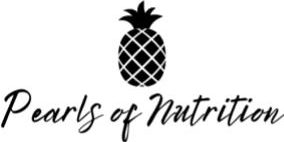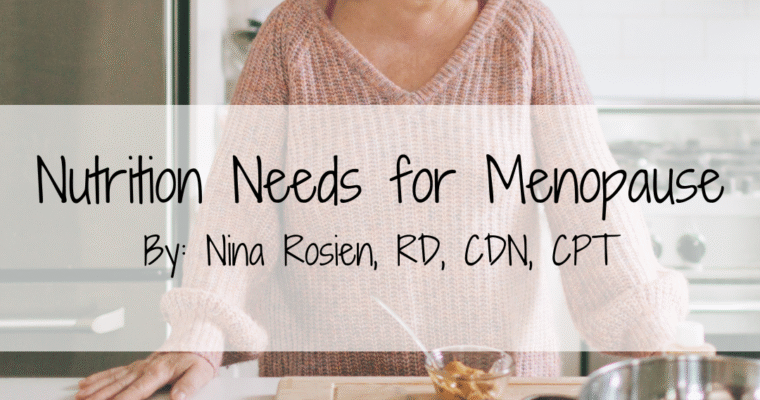
We live in a world where health messaging is everywhere. As parents, it can feel like our job to filter all of the information our little ones hear, but as they get older, they naturally become more aware of all things through school, sports, friends and of course social media. It’s impossible to control it all AND it doesn’t mean we can’t offer support! Hearing kids ask questions or make comments on food and their bodies can feel really challenging so let’s navigate it together.
This will be the first of a two-part series on how to have conversations with our kids in a way that allows us to maintain our role as parents while also offering space for them to think independently for themselves as they get older. This post will focus on the language we use to discuss food and why.
Let’s talk about the “good and bad”:
Categorizing food is super normal and we’ve all likely heard it, if not not done it ourselves. The most common ways we hear to describe food are in binary ways such as “good vs bad” or “health vs unhealthy”. It feels like the easiest way to figure out what we should be eating. The question I pose though, is there a downside to labeling food this way?
When we simplify language too much, it can take away from being able to think beyond simply “do or don’t do”. We miss out on the opportunity to really think and teach about what food is doing for us. Kids tend to think in a very black and white way. If they only hear that foods are either good or bad/healthy or unhealthy, it has the potential to lead to complete food avoidance and/or a sense of morality towards decisions (I am bad for eating this food, I am good for eating this food). This can be super unintentional! We want our children to eat a variety of nutrient dense foods, but a BIG truthy truth is that one food or eating experience alone cannot lead to a better or worse health outcome.
When I have parents and children of any age come into my office, I like to unpack this often by asking questions, including the following:
- If we eat broccoli one time (broccoli typically being viewed as a “good/healthy” food), does that make us healthy?
- What if we eat only broccoli all day long is that healthy?
- If we eat a cookie (cookies typically being viewed as a “bad/unhealthy” food) once does that make us unhealthy?
- If we only eat cookies all day long does that make us healthy?
- What if we avoid cookies altogether?
Now, let’s be real. Of course broccoli and cookies are different! The key is that choosing to eat one or both does not make us a better or worse human OR substantially impact our health for that matter. We have to look at the bigger picture to understand the true impact.
Let’s think about the differences in these two foods:
- There are foods that give us a package of nutrients, like broccoli. For example, vitamin C supports our immune system and can help us fight against getting sick, fiber which is helpful in avoiding constipation (because no one likes an upset tummy) and potassium which is helpful in contracting our muscles (like our heart or when we’re running on the soccer field). Now, these are great things, but if we only eat broccoli for dinner it is pretty low in energy (calories) so this will not keep us full for very long and certainly doesn’t make up a complete meal for growing kids (or not growing adults!). We want to plate this with other food groups for a complete meal. If our kiddo dislikes broccoli, there are a variety of different veggies we can substitute and there are a variety of ways we could get creative with broccoli itself (roasted, served with parmesan cheese, mixed into a soup, added to an omelet) to see if they prefer a certain version.
- Cookies on the other hand are a baked good made up of a few common ingredients: flour, sugar, eggs, butter, vanilla extract, baking soda/powder and salt (+/- your favorite additions of course). The ingredients that are in the highest amounts are flour and sugar, meaning this is a food we like to call a quick energy food or the “Mom I’m still hungry” after eating it, food. Sugar and flour are not inherently bad for us, the nutrients offered are simply different than that of broccoli or other vegetables. Regular flour is made from wheat and offers some of our B vitamins (Niacin, Thamin, Folate) and is also a carbohydrate, which breaks down to give our body energy. Sugar contains little to no micronutrients (vitamins/minerals), but does provide the body with an easy source of energy, similar to flour. If your kiddo has ever come home really hungry after school and they request something like a cookie for a snack, you know they will either want multiple cookies or ask for more snacks before dinner simply because one cookie just doesn’t cut it. Knowing that this food has mostly quick energy ingredients, we can offer it with other food(s) that will actually help them to feel satiated i.e. cookie + glass of milk or a cookie + fruit + peanut butter. For more pairings, chat with your Registered Dietitian (RD)!
- The key is that we don’t have to completely avoid cookies in order to support our health and if our kid eats broccoli, awesome! Nutrition awareness vs obsession is the key. I always like to say we have to appreciate the food for what it is and then go from there.
Jennifer Anderson, RD and founder of Kids Eat in Color®, which is a website with fantastic resources where she shares how to talk about various foods and their impact on our bodies, depending on your child’s age. I reference her often with clients and their families, and you can check out the website here.
You can also absolutely share this science with your kiddo too so that they understand why you may be offering certain foods. I have found that these conversations are not just helpful for our kids, but for us adults as well to remind us why we also need a variety of foods.
Example:
“Some foods give us quick energy, like cookies and some foods help to keep us full for longer, like milk because it has protein. Let’s have your cookie with a glass of milk today and see what you notice.” Kids love games so see what they have to say!
I also love to ask my athletes if they think there are situations where quick energy might actually be helpful. Quick energy foods like a sports drink with added sugar*, fruit juice, applesauce, crackers or granola bars are an amazing way to give our body energy to use immediately as we start our sport without feeling overly full. This could be pre-practice or a game day.
*Sugar can be a confusing topic. See this post for additional sports information and/or chat with your RD about what you or your athlete might need on a daily basis.
The bottom line is that unless someone has a specific medical condition such as a food allergy or follows a certain religious practice, there is no reason to completely avoid a specific food or food group.
Division of Labor:
Navigating Roles
Let’s talk about conversations that can arise at the table. First off, there is no exact right or wrong way to feed your children! You have to do what works best for your family. To support parents in this I often like to refer to resources from Ellyn Satter, RD and family therapist. One concept of hers that I often reference is “the division of labor” between parents and children. This highlights the parents’ role in deciding what food to buy and how to prepare/serve that food while the child’s role is deciding if and how much to eat*. This is a perfect setup for putting into practice nutrition awareness vs obsession.
Growing kids need to eat a variety of foods. There are five main food groups: protein, carbohydrates, fats, dairy and produce (fruits/veggies). We recommended offering all five of them at each meal. Why aim for all five? Each will provide a unique combination of nutrients supportive for growth and development (see other posts here for further discussion). This will also provide them with a consistent message that each food is important and necessary. If there are foods that need to be avoided for cultural/religious or allergy reasons, it can be helpful to work with your RD to find nutrient equivalent alternatives.
If your child says they want to avoid certain foods/food groups such as gluten, dairy or animal products, ask for more information. If they are having digestive concerns, meeting with their pediatrician to discuss a referral for an RD and GI provider can help to see what may be going on. If there are no digestive concerns, it’s important to make sure we are not limiting foods for the wrong reasons. There is a lot of incorrect messaging out there about avoiding certain foods and without the proper science and support, this can turn into a slippery slope of disordered thoughts and behaviors.
I recommend continuing to buy and serve all foods and in their whole form, unless told otherwise by a medical professional. What does this mean? Avoid buying products with labeling such as reduced/low fat or sugar free. It goes along with what we’ve discussed so far that one food cannot make or break our health. If kids are seeing modified products it could make it difficult for them to be flexible in situations like eating at a friend’s house, at school or at a restaurant. You can share with them that everyone buys different food and what you do in your family is what is best for you. You can also share that our bodies know what to do with all foods so we do not have to know every ingredient in each meal to be okay. If someone in your family has a medical reason for avoiding certain foods or buying certain products this can be a really important conversation to have with your children as well.
*If your child is recovering from an eating disorder (ED), they may need a prescriptive meal plan in order for them to recover adequately. This may mean temporarily taking away autonomy around meals/snacks until they are better nourished. Work with your RD to discuss this process further.
Food Refusal
What do you do if your child refuses to eat what is served for dinner? What if they ask for an alternative? This is really hard. One thing that works well with picky eaters is to serve at least 1 safe food that you know they will eat. Continue to serve the entire planned meal because visual exposure is still very helpful in creating comfort around a variety of foods. Sometimes offering an alternative like a sandwich can be an option if they’ve tried the main meal and are still hungry. If your child is recovering from an ED, this may be a situation you encounter often and is an important conversation to have with their RD to come up with an individualized plan.
What if they only want dessert? Can I say “if you finish your broccoli you can have a cookie?” This is also really tricky. I actually recommend considering plating dessert with dinner. I often get asked, won’t they just eat the cookie and nothing else? You will be surprised that after doing this a few times, sometimes they may eat the cookie first and sometimes they may eat it at the end. By plating a cookie with dinner it shows there is a place for all foods without over emphasizing any one in particular. We know our bodies feel best after a full meal so this is a great way to showcase that. The reward system can sometimes feel like our only hope so just be gentle with yourself and view this as an experiment. What if they eat the cookie and just keep asking for more? We can respond by being really honest and logical with them: “I know you want cookies right now and I love cookies too, but there are no more on the menu tonight. We can have them again later this week”. This honors what their body is saying and that you can relate to them (cookies are delicious), shows you are listening (by planning it in the future), all while still holding the boundary as a parent (your body needs this entire meal). Food flexibility is an amazing skill to teach our kids! If your child has become avoidant of foods like desserts/cookies or often requests different dinners, plating meals in this way is great exposure for them as well. I recommend working with your child’s treatment team (RD, therapist) to come up with an exposure plan that works best for them.
Working Together as a Family
When I work with a child/teen, we start to look at how everyone in the family is eating. Again, unless there are cultural/religious preferences or food allergies/intolerances I do not recommend avoiding a specific food or food group. Sure, we are all allowed to have preferences and we want to make sure that everyone is modeling appropriate food/mealtime behaviors. Everyone’s plates will look different and that’s normal. For example, a 17 year old plate for an athlete will look different than younger siblings and even parents. What we want to try and avoid is any language that may be harmful i.e. “you’re going to eat all of that?”. Conversations about mealtime expectations can be really great to have before meals so that everyone feels safe and comfortable.
When it comes to our own preferences as parents, we want to be really mindful of where they come from. We highly encourage parents to avoid dieting and discussing dieting around children. This is not a post about the science of dieting, but what we do know is that dieting is the number one predictor of development of an ED. If you have a history of dieting or are currently finding it hard to consider eating any of the food groups discussed, consider working with an RD of your own and/or see additional posts here for more information on the science.
Feeding our kids comes with a lot of challenges, but the foundation and key takeaway is that all foods can absolutely fit and no one food is morally superior to another!
To come – part 2: talking about health and weight.


